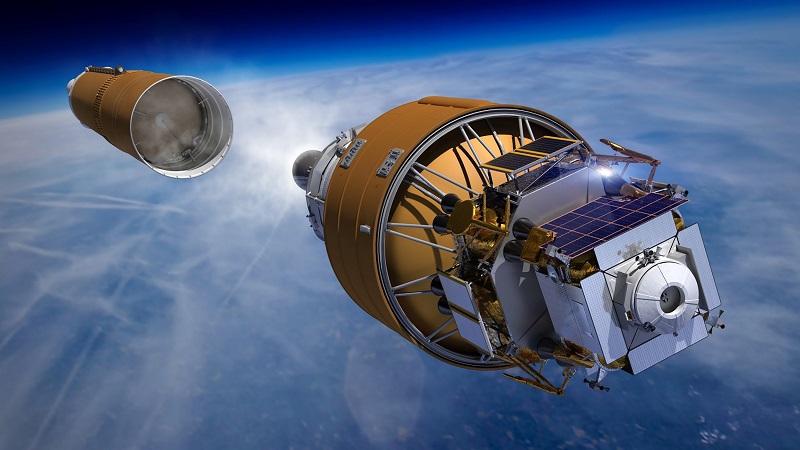Boeing has proposed using one rocket launch to deliver an integrated lunar lander system to lunar orbit as part of US plans to return to the moon under the Artemis program.
The aerospace giant says the approach reduces the complexity and risk of sending multiple elements into space on a number of launches and reduces the number of “mission-critical” events to five from the 11 it says are required by other strategies.
It says its integrated lander also can carry itself from lunar orbit to the surface without an additional transfer stage or “space tug,” further reducing launches and simplifying the steps to a successful landing.
READ: Boeing’s Starliner passes crucial test.
“Using the lift capability of NASA’s Space Launch System (SLS) Block 1B, we have developed a ‘Fewest Steps to the Moon’ approach that minimizes mission complexity, while offering the safest and most direct path to the lunar surface,” said Jim Chilton, senior vice president of Space and Launch for Boeing Defense, Space & Security.
US President Donald Trump issued a policy directive in 2017 directing NASA to return astronauts to the moon before heading to Mars.
The administration wants to land humans by 2024 and NASA has indicated it intends to land the first woman on the moon as part of the program.
Artemis has several components including the Lunar Orbital Platform-Gateway, a space station around the moon that would be accessed by the Orion Multi-Purpose Crew Vehicle designed to take astronauts beyond Earth orbit and capable of carrying up to six astronauts.
Several private companies, including Space X and Blue Origin, are also competing for the project.
Boeing proposes using the giant SLS rocket currently in production at NASA’s Michoud Assembly Facility (MAF), arguing it has “unmatched lift capability that builds on proven flight components”.
This approach shortens development time and lowers risk, enabling NASA to safely land on the moon’s surface by 2024, it says.

It argues the lander’s flexible design allows for the fastest path to lunar flights while providing a robust platform that can perform NASA’s full range of exploration missions.
The spacecraft will be able to dock with the Gateway lunar orbiter or directly with NASA’s Orion to eliminate the need for an additional spacecraft.
The aerospace giant is promising advances in the design that include innovations in its engines, composites, and automated landing and rendezvous systems.
It says key technologies are based on its CST-100 Starliner spacecraft, which recently passed a crucial abort test will be fully demonstrated during a flight to the International Space Station planned for December.
Boeing partnered with NASA’s Marshall Space Flight Center, Johnson Space Center, and Kennedy Space Center and says it will collaborate closely with NASA to integrate, certify, and operate its system.
























